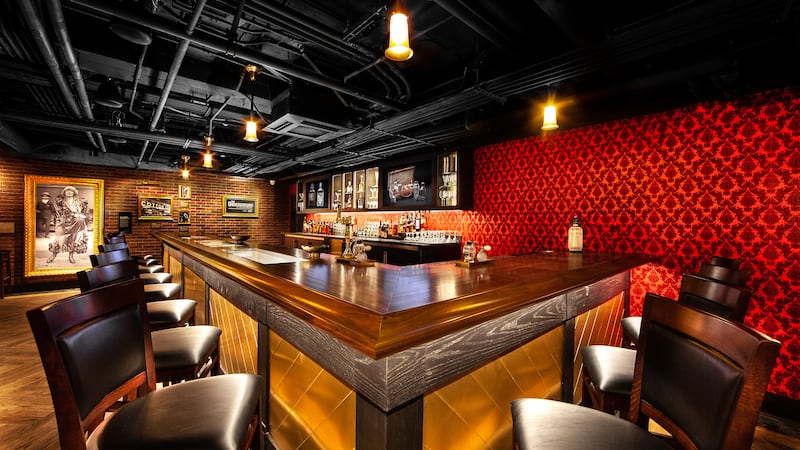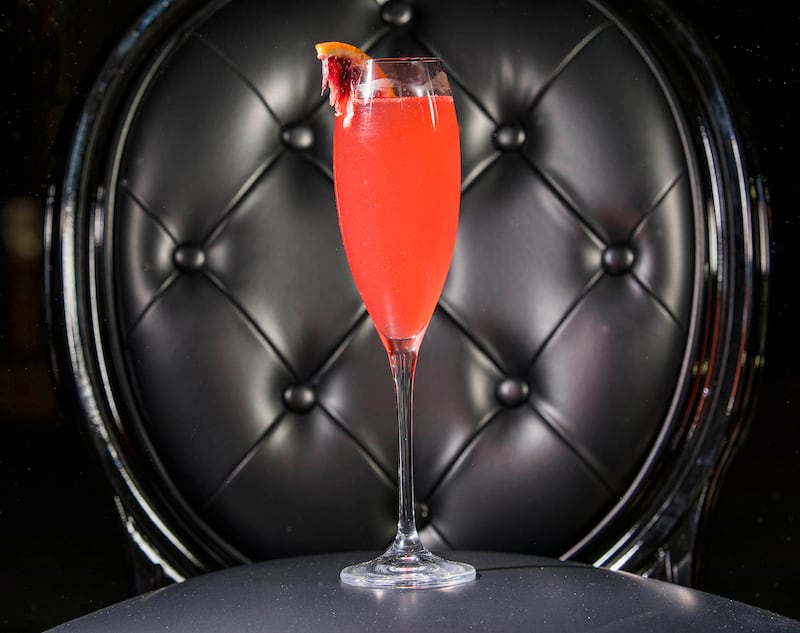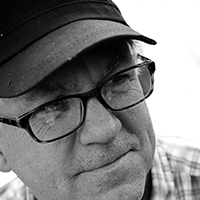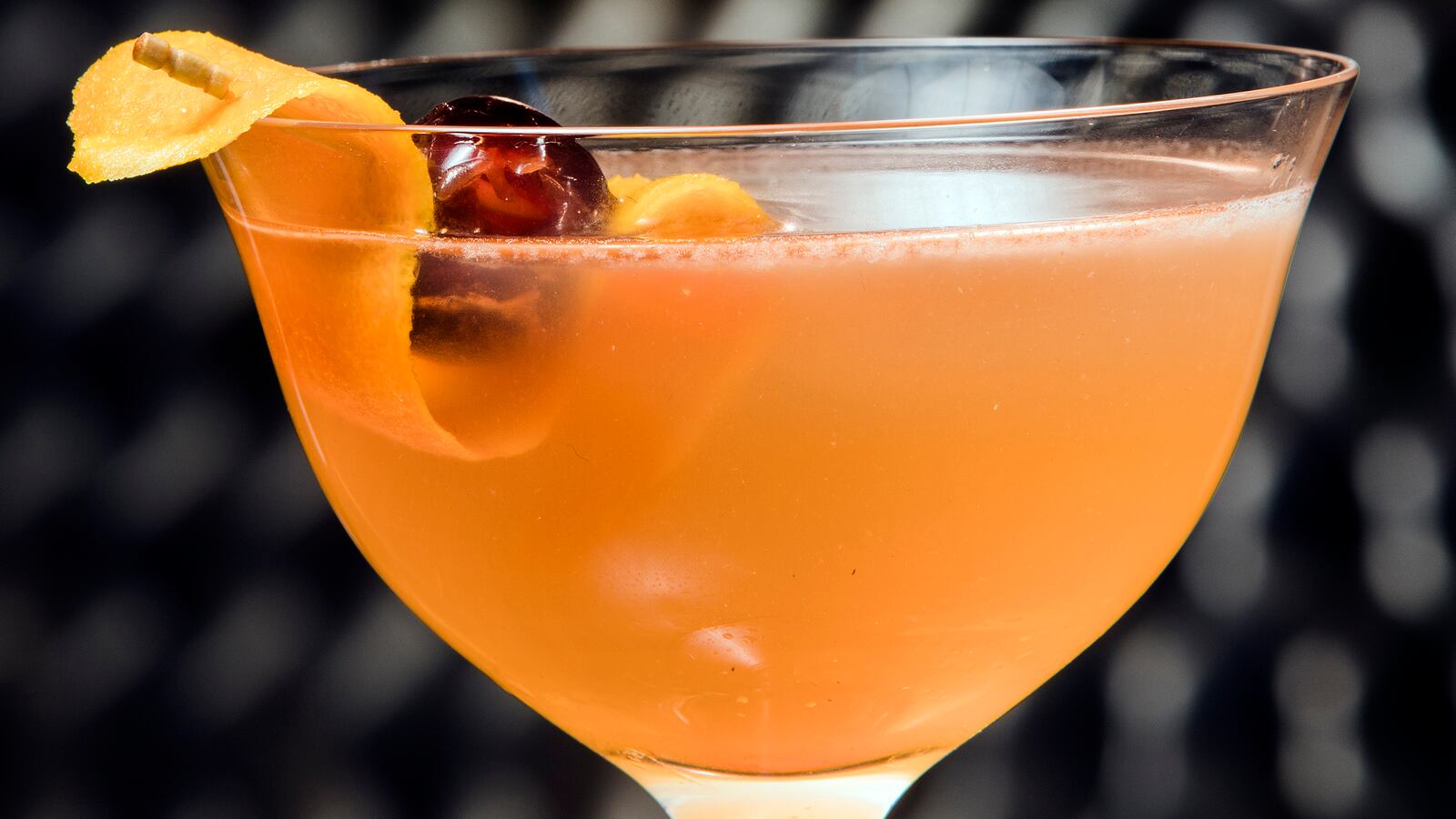The place seems familiar even if you’ve never been here.
You walk down a set of charmless concrete steps along an imposing building to an unmarked basement door. You knock. A metal slot about the size of pencil box slides open abruptly, and a pair of eyes peers out. You pass muster; the door opens.
There’s a bar inside, of course. You approach and consider the pleasingly outdated drink list: Bee’s Knees, Rock & Rye, Rattlesnake. The background music is 1920s-inflected and appropriately flappery, but, hey… is that a hip-hop overlay to the beat? Whatever. You order an Old-Fashioned, and the bartender delivers a glass of ice and a hardbound book. You open the book. Inside is a flask. You pour. You drink. You learn.

The Prohibition-era speakeasy is the easily most overused trope in the modern cocktail revival. Since PDT opened in New York eleven years ago this month (you enter a hidden, low-ceilinged bar through a phone booth in the back of a hot-dog restaurant), it’s been joined by others: Green Russell in Denver (enter through a pizza parlor), La Descarga in Los Angeles (go through an armoire), and Bourbon & Branch’s Library Bar in San Francisco (a speakeasy within a speakeasy accessed via a trick bookcase). These and many more are nods to the lure of illicit drinking, which took place during the thirteen years when alcohol sales were banned nationwide.
But the Underground at the Mob Museum, which opened in downtown Las Vegas late last month, is different. For starters, it’s part of a non-profit museum, which occupies the impressive former federal courthouse and post office upstairs. Here, your drink comes with a side of history and a healthy heaping of context. While tricked out as an old-time speakeasy, the mission is more educational, teaching visitors not only in how a drink was consumed, but how it was made—as demonstrated at an operating distillery in the room next door.
For an event as society-changing and momentous as Prohibition, there’s shockingly little physical evidence anyone can see and touch—few monuments or shrines or museums. Perhaps this is not so shocking—it was an era of backwoods stills, night-time boat trips, coded radio transmissions, and speakeasies that vanished the moment Repeal was signed. There’s nothing to see here, literally. It’s also an era many would just as soon forget—Prohibition was one of the grander and more embarrassing failures of American policy, so the grantmakers find this an easy era to ignore.
It’s not that no Prohibition landmarks exist. I’ve found the occasional temperance fountain that led to Prohibition—in Richmond, Virginia; in Petaluma, California (“Total abstinence is the way to handle the alcohol problem,” 1891). I’ve been to St. Pierre-Miquelon, the windswept French islands off Newfoundland that became a bustling entrepôt for smugglers. (It’s home to what’s locally called Cutty Sark Villa, which is paneled inside with wood from broken-up whiskey crates).
I’ve seen the damaged back door of the Women’s Christian Temperance Union’s building in Portland, Maine, the home of temperance pioneer Neal Dow, who once fought off axe-wielding tipplers denied their drink. And someday I hope to visit the Andrew J. Volstead House Museum in Granite Falls, Minn., where the chief architect of American Prohibition once lived.
But this new 2,000 square foot speakeasy and distillery marks an ambitious attempt to provide a permanent home to Prohibition’s past. And it’s wholly appropriate that it’s housed at a museum devoted to organized crime—Prohibition is often depicted as a time of free-spirited chaos, but it was actually quite put together. Illicit liquor didn’t just magically appear in speakeasies—it had to get there by either going around or through the local police, and the most efficient sluice for that was the mob.

“And it’s very much the story of immigration,” says CEO Jonathan Ullman over drinks at the bar. Many newcomers found their American opportunity blocked both financially and socially when they arrived, and so took to establishing side hustles that became a multi-million dollar enterprise when Prohibition went into effect in 1920. Organized crime networks were poised to dominate the liquor trade.
How “alcohol was thriving in the shadows,” as Ullman put it, is also explored in upstairs exhibits, where visitors see various artifacts that include a wall made of 312 actual bricks taken from the garage where Chicago’s St. Valentine’s Day massacre occurred. The divots from the bullets are visible, highlighted with red. (“It’s paint, not blood,” a guide assures visitors).
Exhibits in the new basement speakeasy expand on how liquor, the mob and social change all converged in dim corners of society, altering it as it did so. “Besides providing illegal liquor,” an exhibit notes, “speakeasies cultivated jazz music, dance crazes and the rise of the flappers—young women who embraced bold fashion and liberated behaviors.”
“What we’re trying to do in this functioning bar space is pack as much content as possible,” Ullman says—using storyboards, artifacts embedded in cases set in the bar top, and bartenders who tell stories about the era-appropriate drinks they serve.
In the adjacent distillery, distiller Cole Miller produces pure corn liquor on a sixty-gallon still imported from Germany—again, it’s educational: a glass tank allows visitors to see how the cooling coils function within it. While few speakeasies had their own stills—these were more outlets than factories—production is an essential link in the chain. (The museum also has a miniature operating brewery.)
The 100-proof corn whiskey will not be winning any awards for its quality—“it’s authentic swill in a souvenir bottle,” says Ullman—but it’s pure corn, and pure whiskey. You can buy some in a mason jar, or an airline bottle, or get it in a cocktail at the bar. Or just sidle up to the bar for a complimentary taste.
As Ullman and I watched, a trio of Midwesterners sampled, and made faces as if they’d been served strychnine. And then, naturally, they asked for a bottle to go. “It’s a rite of passage,” Ullman says.
As is learning about how Prohibition and the mob were like dance partners, jitterbugging across the floor from 1920 to 1933.
“So raise a glass to the past, drink what they drank, and remember,” reads a wall plaque in the basement near the exit, “you were never here.”
The Mob Museum is at 300 Stewart Ave. in downtown Las Vegas. During the day, the bar is open to admission-paying Mob Museum visitors via elevator or interior stairway; after 5 p.m. guests can enter without charge through the basement stairwell.






